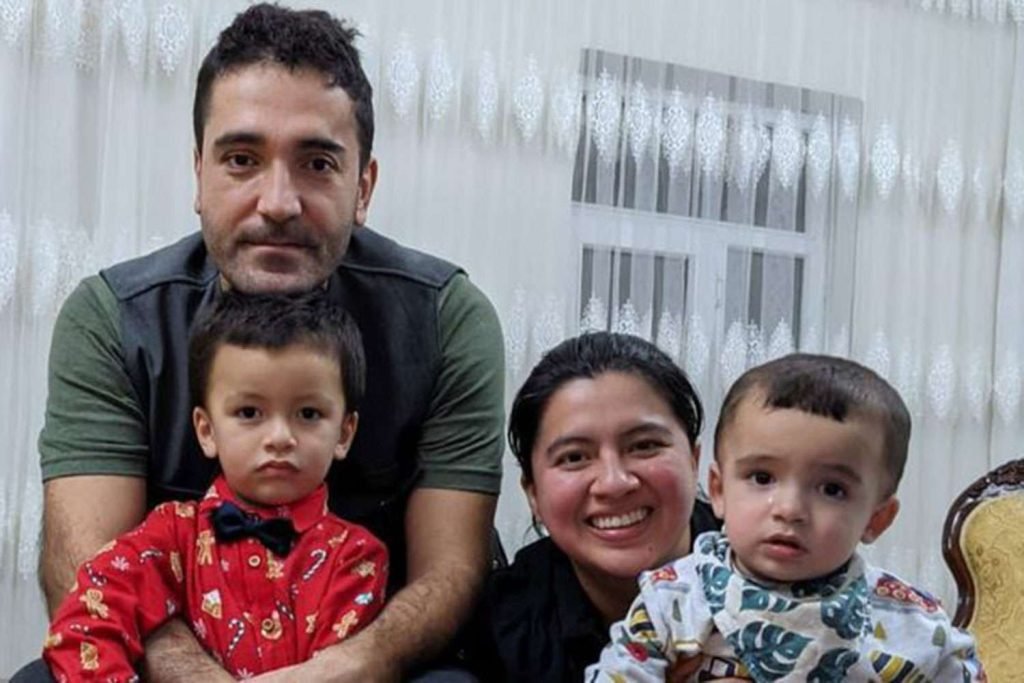
Sabriye Karan’s late husband worked for the Turkish national rail company for 32 years and her daughter Nehir grew up riding trains. After powerful earthquakes struck Turkey and damaged her home, she and Nehir moved into one.
“We never imagined we would live here,” said Sabriye, who has been sharing a two-bed sleeper cabin with 13-year-old Nehir for the past 18 days. “Normally, it’s a joy to travel on the train. But now it’s different.”
Turkish authorities have been racing to find accommodation for the more than 1.5 million people left homeless after February’s huge earthquakes, which killed some 50,000 people in Turkey and Syria. Survivors have been sheltering in tents, container homes, hotel resorts and even train carriages in Iskenderun, a port city in the province of Hatay, badly hit by the earthquakes.
Although Sabriye and Nehir’s third-floor flat was only lightly hit, with some cracks appearing on the walls, they fear moving back. Subsequent earthquakes and aftershocks have caused further damage to weakened buildings and authorities have warned people that many are unsafe to enter.
Iskenderun station is open but two tracks are packed with wagons housing hundreds of survivors. Those first to arrive like Sabriye and Nehir found sleeper cabins. Others, like Arafat Ates, 63, and his wife Zeliha, 53, sleep upright on seats.
“Hatay, our beautiful land,” they lamented. “We don’t know how we will get through this disaster.”
In another carriage sat Yusuf Kurma, 20, and Aysel Ozcelik, 20, holding hands. The couple, who planned to marry, ran to find each other after the first shock. Now they might postpone the wedding. “We can’t have a wedding when we have so many dead,” Ozcelik said.
AFRAID TO GO HOME
Step ladders and small benches dot the tracks to help people reach the carriages. Occasionally, a station employee warns survivors walking across the tracks that a train is approaching.
At first, every time a passing train blew its horn, it would startle Sabriye and Nehir. “Now we’re used to it,” said the 57-year old law firm clerk.
Their narrow cabin, the width of a train window, holds a few essentials and is warmer in the cold nights than a tent. They spend at least 18 hours a day inside, leaving only to take short walks around the station and line up for breakfast and dinner served by aid groups.
The sparse company since the earthquake upended their lives has taken a toll on their mental health, Sabriye said. Her husband died of COVID in 2020, and she had been struggling to cope with the loss, now compounded by the trauma of the quake.
“I feel so alone,” she said. “I miss our social life and drinking coffee with the neighbours.”
The mother and daughter visit their apartment for a couple of hours every other day. They move through it with caution but shower, do the laundry and take some food. When they leave, Sabriye recites a prayer.
“I don’t know if when I come back, it will still be standing or not,” she said.
After the local authorities determined their building was only moderately damaged and therefore safe, the pair tried to sleep at home again. But when they felt what they thought was another tremor, they panicked and fled, Sabriye said.
“We’re too afraid to go home, especially at night.”
She insists she will one day return to her house and has left the contents intact. She placed the television on the floor and put pillows around it, in case of another shock.
For now, the transience usually associated with train stations has evolved into an ambivalent permanence for the two.
But even in the relative safety of the train carriage, anxiety lingers. While a train worker was fixing the tracks one night, the train jolted, causing Nehir to gasp and cling to her mother.
“Here, when we shake, people die,” Sabriye said.

